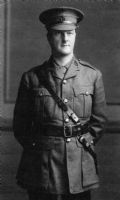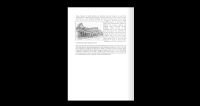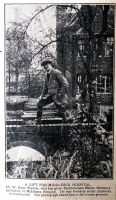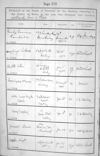|
Personal information about Walter Essex Wynter
Below is all the information we have about Walter Essex Wynter. As far as we know, the information is correct. However, if you find any errors or have additional information, certificates or pictures, please contact us so that we can update this page. Thank you.
Burial Information
Name on burial register: |
|
Walter Essex Wynter |
|
Burial register image
Click image to enlarge |
|
Age at death: |
|
84 |
Date of burial: |
|
10 January 1945 |
Abode at death:
(according to burial register) |
|
Batholomew Manor, Newbury |
Burial register information: |
|
| Book number: |
1917 |
| Page number: |
256 |
| Record number: |
11645 |
|
Official at burial: |
|
E H Stenning |
Burial Status: |
|
ashes |
Source of information: |
|
Burial Register |
Memorial Details
| |
Walter Essex WYNTER |
| |
04 January 1945 |
| |
84 |
| |
Male
|
| |
|
| |
Headstone, 4 Kerbstones, vase. |
| |
Granite. Letters. |
| |
|
| |
Headstone: Ada Margaret Wynter / 1864-1937 / "She hath done what she could." / W. Essex Wynter / M.D., F.R.C.P., F.R.C.S. / 1860-1945 //
|
| |
|
| |
Good |
| |
ZZ8 |
| |
They lived in Mayfair prior to retiring to Bartholomew Manor, Argyle Rd. Newbury, which they refurbished. Ada: d. of Samuel Wills, sugar refiner & magistrate of Bristol. Walter, from a medical family, was a physician of repute at London hospitals, an early advocate of lumbar puncture & splenectomy. Author of a series of books on Minor Medicine. Founder of the home for retired Middlesex Nurses in Argyle Rd. Full notes on FRNC website. Source of death dates: Probate records on ancestry.co.uk
|
| |
|
| |
13 April 2000 |
| |
EAC |
| |
| Click here for more information on this memorial. |
Other people list on this memorial
|
Ada Margaret WYNTER
|
Obituaries and Newspaper announcements
| Dr Essex Wynter |
|
| Article source: |
|
Brian Withers |
| Date of source: |
|
22 January 2012 |
| Copyright: |
|
© FNRC |
|
|
|
Dr Wynter
Grave Ref ZZ8
Doctor Walter Essex Wynter was the son of a GP Andrew Wynter of Chiswick. Andrew edited the British Medical Journal from 1855 – 1861. Walter was born in 1860, was educated at Epsom college and the Middlesex hospital and became a physician to that hospital in 1901. He was a FRCP and FRCS.
Whilst a registrar at that hospital in1890, he was a pioneer of the lumber puncture procedure for removing or reducing infected spinal fluid. He developed the process but although the German physician Heinrich Quincke was the first to use needle lumbar puncture, he credited Dr Wynter with the earlier discovery.
When he retired from medical life, he set up home in Newbury with his wife Ada, in the early Tudor house known as Bartholomew Manor in Argyle Road. The house which was originally in the estate of John Winchcombe (1489 – 1547) was originally a medieval farm house with an upper storey added in the 15th century. Dr Wynter restored both that house and modernised the neighbouring almshouses in the 1920s.
The Essex Wynter charity was set up by him and still exists today, providing accommodation and support for retired nurses and today, in addition, other NHS staff. The gardens of the house were very extensive and took up a large area within the city including the area where the care home currently stands and continuing right across to the junction of Argyle Road and Rectory Close by the Northern gate of the City Playground (Hampton Road). When he died in January 1945, his lands and properties were willed to the Essex Wynter Trust, a charitable organisation.
Both he and his wife Ada Margaret Wynter who died in August 1937 aged 73 are in the Newtown Road cemetery although Dr Wynter was cremated and his ashes buried in the same plot as his wife.
Contributed by Brian Withers |
|
This obituary entry is awaiting verification.
|
|
|
| |
|
| Essex Wynter - SOLD IN AID OF THE FRIENDS OF THE MIDDLESEX HOSPITAL |
|
| Article source: |
|
EVELYN L. WANNOP. |
| Date of source: |
|
09 March 2023 |
| Copyright: |
|
© |
|
|
|
SOLD IN AID OF THE FRIENDS OF THE MIDDLESEX HOSPITAL
What I have to tell you could begin as a " once upon a time " story, but it is not fiction. It was an idea of Dr. Essex Wynter's and throughout a number of years it became a reality. Dr. Wynter entered the Middlesex Hospital in 1878 and was an outstanding student. He had a brilliant career as a physician on the Staff until 1919 when he bought Bartholomew Manor and adjacent properties. The Manor was then called Lytton Cottage, but has since been known by its original name. Dr. Wynter remained as consultant to the hospital until 1925 when he retired—as the local paper later recorded: ' he preferred the peace of his garden to fame.' He had always been very appreciative of his ward sisters and was aware of the problems that lay ahead for those without private means to support them when their working days were ended as the only income then provided was the old age pension of 5/- per week. I think a glimpse of his background may throw some light on his desire to help those in need. He was the son of Dr. Andrew Wynter who was an associate of Charles Dickens and collaborated with him in editing a weekly journal, and the influence of such men must have made a profound impression on his youthful mind in those days of hardship for so many, and particularly the single woman with no home. Before dealing with the present, the history of our surround-ings is not without interest. Records show that the Manor existed before the Norman Conquest although it is not mentioned in the Domesday Book as it was then part of a larger estate. The Romans named the region Civitas, and to this day it is known to Ncwburians as 'The Old City.' At the time of the Norman invasion the Manor was withheld from the Crown by Ulward, the Saxon, and known as Ulvritonc. Nothing more was-heard of Ulward, who was probably killed at Senlac, and the Manor was next granted to Ernulph de Hesdin, one of the wealthiest noblemen of that time, who founded Newbury Church. He had a disagreement with the King and went on a Crusade, but died at Antioch before reaching Jerusalem. The next recorded holder was the Earl of Perche and it was later possessed by the Earl of Pembroke, the Lord Marshal who sided with Matilda against Stephen. This nobleman quarrelled with the Church and was solemnly cursed. He had five sons who inherited the Manor in turn, but all died without male issue. By 1394 the Manor was held by Richard Fitzalan, Earl of Arundel, who was beheaded, and it was subsequently held by the Earl of Bohun, then by Roger and Edmund Mortimer, and eventually Edward IV whose grandmother was a Mortimer. In the 16th century Jane Seymour was in possession, it being part of her jointure from Henry VIII, and she passed it to'her son Edward VI, and onwards to succeeding sovereigns until Charles I who granted it to the town of Newbury. Before these regal ownerships, a large part of the demesne, about 140 acres, had been given to Sandleford Priory and when this Priory was dissolved in 1478 the land was handed over to St. George's Chapel, Windsor, and now belongs to the Ecclesiastical Commissioners. The present Manor House originated about 1350 and it still contains some of the oak timber used in its construction. At a remote date the roof has been raised and one of the jack rafters has been formed out of an unglazed windowhead which puts the alteration at not later than 1480 and possibly much earlier. In 1550 it would seem that the ground floor of the house was in use for the accommodation of farm animals, horses and cattle, for in that year J. H. Winchcombe, son of Jack o' Newbury, altered it to incorporate the ground floor into the dwelling house as it now exists. To house the dispossessed animals he built nearby a range of buildings, cart-shed, stables, and so forth, which by 1670 became the property of Phillip Jennett, an official of the Brewers' Company, who erected the Arms of the Company over the porch where they remain, and then proceeded to divide the building into cubicles, putting in chimneys and converting the whole structure into somewhat primitive almshouses which were probably in use until the last century. It must have been a sorry sight when Dr. Wyn.ter acquired it and set about repairing the delapidations. Now begins the story of the great task. Living in the Manor House, Dr. Wynter was able to watch his dream come true. The old almshouses were his main concern. He decided the low pitched attic floors were unfit for his purpose, so he had the roof taken off and raised the storey three feet and then replaced it and put in more windows. The exterior was refaced in the original style and within he created eight cottages or, more strictly, maisonettes, which were completed in 1929. Until recently three of them had their old staircases, highly dangerous means of access to the upper rooms. Discoveries during the alterations were an Elizabethan sixpence and a Charles II farthing dated 1670—the first year these coins were minted. I was privileged to delve into the archives of the local news-paper and the rejuvenation of .this block was hailed as a remarkable achievement, being given front page coverage at that time with a picture of the doctor in his garden. Prior to tackling the almshouses project, two cottages dating from ? late 16th, early 17th Century at the bottom of Argyle Road had been made habitable and they were first occupied in 1926. Two more cottages were added in the same style when a barn used as a storehouse by a nearby grocer was demolished and these form Bartholomew Close. Dr. Wynter could be described as a fanatic for the Tudor period and he insisted on old bricks, old wood and old tiles of that date being used in any reconstruction necessary. These he scoured the countryside for, and acquired, as buildings of the right type were pulled down. During his wanderings he discovered an interesting collec-tion of wooden shutters which are now used as interior doors in the middle block. They are made of extremely ancient oak. About 1840 the authorities of Eton College saw fit to order the removal of antique shutters from the oldest buildings dating from the foundation of the College by Henry VI. They were designed for unglazed windows. The builder who carried out the work retained them in his yard for a number of years and then sold them to a dealer. A medical man bought them later at Witney for eighteen pence each, probably intending to use them for some purpose, but they remained in his attic for more years until he gave them to Dr. Wynter when he visited him. They are carved all over with the names of old Etonians, many are dated, the earliest 1593 and the latest 1840 — the 18th century is particularly well represented. The next part of Dr. Wynter's plan was to build eight more cottages, again in Tudor style, on ground beyond the alms-houses, with old bricks, tiles and timber already accumulated. Only six were completed and they bear the Middlesex Hospital shield above the central arch. The first occupants moved in during the early part of 1937. Then came the war years and vacant cottages were requisi-tioned by the local Council and not released until about 1950. Our recent benefactor is the ever generous Lord Astor of Never and it was he, as Major Astor, M.P. (as he then was) who presided over the Board of Governors when Dr. Wynter offered his gift to the hospital many years ago, and he stated that Dr. Wynter had left directions in his will for the whole property, including Bartholomew Manor, to be held by the Middlesex Hospital in perpetuity with an endowment, for the use of retired nurses. Sad to relate, when the doctor died there was no money and this meant that for many years the cottages were without necessary maintenance as any rents at that time were very nominal. The picture has changed within the last few years, and a short while ago Lord Astor gave a most generous sum of money which has been used to build two double-bedroomed bungalows and much needed kitchens in all except four of the old cottages, and to provide off-peak heating, a great boon. Miss Phillips has also donated sufficient funds for a smaller, but equally delightful bungalow. The bungalows are buiYt near the site where the Three Martyrs of Newbury were burnt at the stake in 1556. The Ravenshear Home was opened just over six years ago. It was a gift from a gentleman of that name in memory of his wife and contains four single rooms to be used by those who feel they are not able to manage in their own cottages, but are still by no means inactive. Dr. Wynter died in the local hospital, aged 84, having enjoyed a long life although he was an invalid for many years. His much loved cottages will remain a practical and greatly appreciated memorial to him. His Manor is ancient, and although it has seen much tribulation in the past, it apparently has no restless ghost. I should like to think that the spirit of Dr. Wynter some-times is abroad in his garden and can sense that those for whom he cared so much are living happily ever after.
EVELYN L. WANNOP. |
|
This obituary entry is awaiting verification.
|
|
|
| |
|
| Essex Wynter |
|
| Article source: |
|
British Medical Journal |
| Date of source: |
|
20 January 1945 |
| Copyright: |
|
© |
|
|
|
WALTER ESSEX WYNTER, M.D., F.R.C.P.
On Jan. 4 the death took place at Newbury of Walter Essex Wynter, aged 84, consulting physician to the Middlesex Hospital, *here he was over a long period of years both beloved and respected by many generations of students and house-physicians. He was the son of Andrew Wynter, M.D., editor of the British Medical Journal 1855-61, was born in 1860, and was educated at Epsom College, on the council of which he afterwards served for many years, and at Middlesex and St. Bartholomew's Hospitals. He qualified as M.R.0;S. in 1883 and became F.R.C.S. in 1885, but he gave up surgery in favour of medicine, took the M.B.Lond. (with honours) in 1887, the M.D. in 1888, and became F.R.C.P. in 1897. Elected to the staff at Middlesex he soon established a high reputation not merely as a physician but as a very fine teacher ; and this at a time when Middlesex had several other remarkable personalities on the teaching staff (e.g., Bland-Sutton). He published two books in his early days—A Manual of Clinical and Practical Pathology in 1890, and Minor Medicine in,1891. Wynter had a strongly built sturdy frame, with a rubicund and cheerful countenance, and was a man of boundless energy. As the Times has indicated, he was independent of private practice, but worked hard in his wards and' in his teaching rounds from pure enthusiasm. When he retired from London, a good many years ago, he discovered on the edge of Newbury (and almost next door to the district hospital there) a semi-derelict manor house, whose ground floor was being used as a store for builders' ladders, wheelbarrows, and other stock-in-trade. This he bought and very lovingly restored : upstairs is some of the oak timber of the original building (of 1330), downstairs a charming room with herring-bone red brick work and oak panelling dating from 1550—he used to speak of this as the " modern improvements " then undertaken. This treasure —Bartholomew Manor—with a beautiful old-world garden, he was never tired of displaying to any visitors. Within the same curtilage stands another very ancient building, which Wynter converted into a hostel for retired nurses ; of this a full account was given in the Journal of Feb. 19, 1938. It is understood that- he has provided an endowment fund, to be administered by the Middlesex Hospital, to keep in being this splendid work of practical (and much-needed) philanthropy. Another of his interests, as has been mentioned, was his old school, Epsom College. After the last war .his brother, the late Dr. Andrew Wynter, handed his war gratuity to the college to accumulate at compound interest until it should be sufficient to found a scholarship ; to this gift Walter added very con-siderably, and the fund now stands at just about the goal the two brothers had in view—namely, £1,000. At Newbury Walter Wynter was of great value as physician to the district hospital ; he also served for several years on the town council and rendered immense service as chairman of the public health committee. When about 70 years of age he was advised to submit to amputation of one leg above the knee ; naturally his friends began to entertain forebodings for him, but he " never turned a hair " after the operation, and soon became as active and energetic as ever. He was of a most amiable and cheerful disposition ; a correspondent says rightly that he can hardly have had a single enemy. He Married Ada Margaret, daughter of Samuel Wills of Bristol ; they had no children, and Mrs. Wynter died in 1937.
Surg. Rear-Adml.. GORDON GORDON-TAYLOR writes :
May I offer a tribute to the extraordinary charm of Walter Essex Wynter and to his surgical " angle." Wynter's interest in surgery remained throughout his professional career ; he taught for some years along with Bland-Sutton in the anatomical department. of Middlesex Hospital. Destined himself to the practice of medicine, he rarely missed an occasion to attend the operating theatre when any case from his medical wards was being operated on, and fortune happily seemed to ordain that during most of the years of. his service at Middlesex his " corresponding " surgeon was his friend Sir John Bland-Sutton, whom he ardently admired. Although a physician, he performed for the first time the operation of lumbar puncture, and he often ventured to suggest ingenious methods for dealing with commonplace maladies :" in the period which preceded the era of liver therapy for pernicious anaemia many a spleen was removed at Wynter's suggestion by Bland-Sutton and the writer, with results which contrasted favourably with those of medical therapy in the treatment of the disease at that time. He had bizarre notions for getting rid of abdominal ascites without the systemic loss of fluid which attends recurrent tapping, and for a period of time " crural drainage " was a fashionable method of treatment for this condition in his wards. He had a passion for exploring new therapeutic preparations ; many were soon discarded, but the writer recalls a more prolonged trial of a preparation—tinctura apocyant, which he termed the " vegetable trocar "—in cases of ascites. Wynter will long be remembered by his contemporaries and pupils for his unvarying kindness and charm ; he had a most lovable nature and could not have had an enemy in the world. He is said to have grown his own tobacco in his garden at Newbury and to have smoked it green; some have alleged that this practice may have had some share in the malady from which he suffered for the last 15 years of his life. He endured much pain and surgical mutilation ; but his affliction he bore with his customary fortitude, equanimity, and cheerfulness, even during the final period of his life, when the advance of crippling disease precluded him from wielding the rod and reel of the craft of which he was so devoted and skilful an exponent.
|
|
This obituary entry is awaiting verification.
|
|
|
| |
|
Pictures and photographs

Major W E Wynter
©Imperial War Museum
Major W E Wynter
|

Essex Wynter 1
Essex Wynter 1
|

Essex Wynter 2
Essex Wynter 2
|
.jpg)
Walter Essex Wynter
Walter Essex Wynter
|

a gift for Middlesex Hospital
a gift for Middlesex Hospital
|
Biographies & History
Related Links
These links go to other websites with information that is relevant to this person.
Please note that FNRC is not responsible for external web site content.
*The FNRC believe that the certificates published on this page have been added in compliance with the rules laid down by the General Register Office (GRO).Click here for more information.
If you believe that we may have inadvertently breached the privacy of a living person by publishing any document, pleasecontact usso we can immediately remove the certificate and investigate further.
Thank you
FNRC.
|
Website designed and maintained by Paul Thompson on behalf of the Friends of Newtown Road Cemetery.

Administrator Login
|
|






.jpg)

